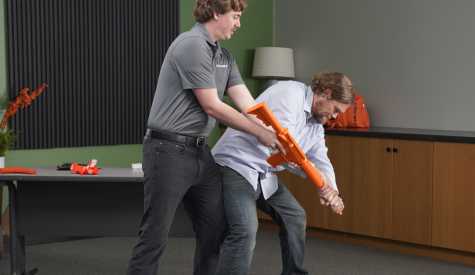Bleeding Control Training | Stop the Bleed Instructor Training

Three Techniques To Stop The Bleed
After a severe injury, a person can bleed to death in as little as three minutes. This means when accidental bleeding occurs, stopping the bleed in those first minutes is critical, and most times you can’t wait for first responders to arrive.
Knowing the three basic techniques to stop the bleed enables you to respond faster and could result in better outcomes
Immediate bleeding control is a critical part of the AVIRT active shooter response training. Through our AVIRT training, you will learn three quick emergency bleeding control techniques that can help save a life. Here is a short overview of the three ways to stop the bleed in an emergency situation.
Direct pressure
Direct pressure is a standard method to control bleeding and can be applied anywhere on the body. If you are unsure about how serious bleeding is, start by applying direct pressure. Using a clean pad, apply firm and constant pressure directly on the point of bleeding using two hands.
Packing a wound
For a more serious wound, it may be more difficult to control bleeding. You may need to pack a dressing tightly into the wound to maintain pressure to stop the bleeding. This can be done using your fingertips and directing pressure toward the bleeding vessel.
Applying a tourniquet
Tourniquets are a tool to help control emergency bleeding in arms and legs. They are now recognized as an essential component in bleeding control for all immediate responders to learn. Once a tourniquet has been placed on an arm or leg, it should never be loosened or adjusted.
Learning to apply these three techniques can help you be prepared to save a life. The AVIRT program gives you in-depth training to stop the bleed and feedback on these techniques to prepare you to act as an immediate responder if an emergency bleeding situation occurs.
Contact us to schedule the AVIRT program, which includes active shooter response and emergency bleeding training for your team.


